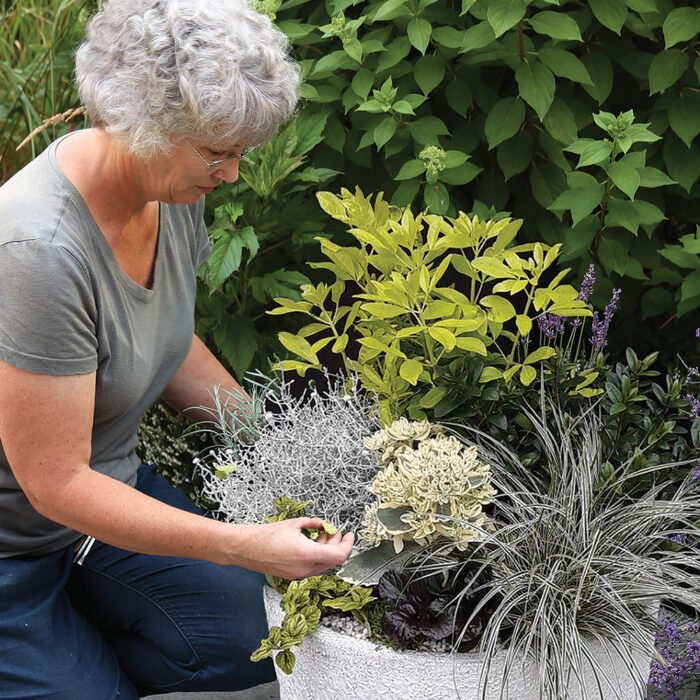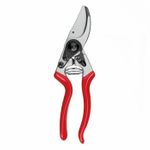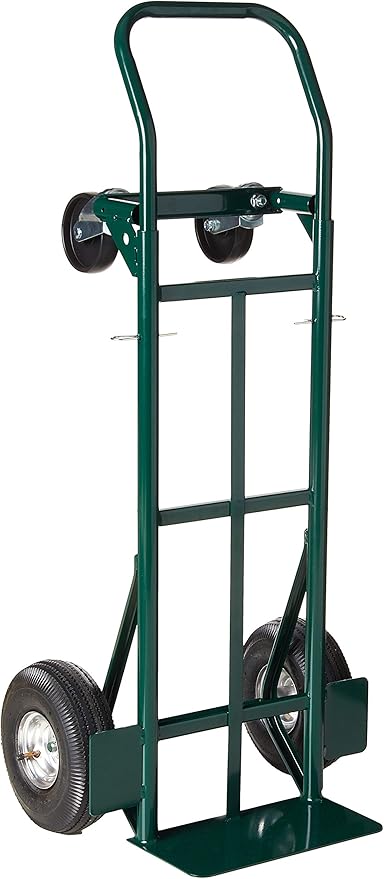Care and Feeding Tips to Make Flower Containers Last Longer
Do your part to keep your pots looking their best throughout the seasons

With all the care and effort you put into selecting plants that last, you want to do your part to keep them looking their best throughout the seasons. Follow these simple care guidelines for success.
1. Give them the right start
Use fresh, good-quality potting soil; brands vary widely in how much moisture they retain. Select the one that is right for your climate and watering needs. If your local public utility makes potting soil from the city’s collected yard waste, that is a great way to use quality, local materials.
2. Skip the mulch
If you plant densely so that no bare soil is showing, you don’t need to add mulch. Sometimes a bit of decorative mulch (like pebbles that match the color tone of your planting) can hide bare soil at the outset and add a little extra “polish” to your creation, but it will most likely be hidden quickly by foliage.
3. Water faithfully
Keep your eye on the soil surface. When the top half-inch of soil dries out, it’s time to water. The timing will vary depending on the season and weather, so don’t trust a schedule; instead, check in with your plants regularly. Water slowly and deeply, and make sure your pot is draining freely. If you’re unsure, a moisture meter can be a handy, inexpensive tool as you learn how to judge the needs of your soil.
4. Fertilize sparingly
Go easy on the fertilizer if you’re going easy on the blooms. Flowering plants may need the extra boost that fertilizer gives, but evergreen plants that are in for the long haul need much less to keep them looking good. Start with a balanced slow-release granular fertilizer (unless it’s included in your potting soil mix); you can always supplement with a diluted solution of liquid plant food formulated for blooms later in the season for those greedy flowers.
5. Remove spent blooms
You and your annuals have competing goals: they want to set seed with all haste, and you want to prevent that to keep the show going. Deadheading (removing faded blooms) regularly is the key to ensuring a long, colorful performance.
6. Be flexible
If a plant is underperforming or waning, remove or replace it. Even annuals with a long bloom season will exhaust their resources at some point. As winter approaches, your evergreens will often be enough eye candy to get you through until spring, when you can pop in fresh annual color.
Barbara Libner is the head container designer and chief merchandiser at Ravenna Gardens in Seattle.
Fine Gardening Recommended Products

Felco Pruning Shears (F 9) - High Performance Swiss Made One-Hand Left-Handed Garden Pruners
Fine Gardening receives a commission for items purchased through links on this site, including Amazon Associates and other affiliate advertising programs.

Harper Super Steel 700-lb. Platform Hand Truck
Fine Gardening receives a commission for items purchased through links on this site, including Amazon Associates and other affiliate advertising programs.

Spear & Jackson 4930FZ Razorsharp Telescopic Tree Pruner
Fine Gardening receives a commission for items purchased through links on this site, including Amazon Associates and other affiliate advertising programs.







Comments
Log in or create an account to post a comment.
Sign up Log in